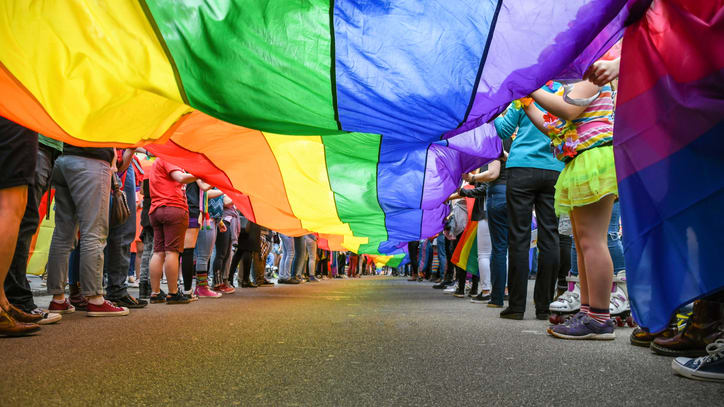LGBT Pride Month: Time to Embrace Workers' Authentic Selves
HR is responsible for creating a supportive, respectful and inclusive work environment for all

Researchers in the field of organizational dynamics have begun to study and critically consider how our work and nonwork lives overlap in the digital age. The trend toward such blending and crossover appears inevitable as we move into an increasingly virtual and global world(which includes more contract—or "gig"—workers, remote workers, and workers employed for shorter periods of time). With this greater overlap between our working and nonworking lives comes a question about the authentic self.
Who are our authentic selves? To what extent do we show our authentic selves in the workplace? As our workplace, home and social lives intertwine, is the next step to begin showing more of our authentic selves to our leaders, co-workers and customers? That would seem risky, even scary, to most people.
For some populations of workers, however, this is not a new issue at all. Members of the LGBT (lesbian, gay, bisexual and transgender) community have struggled for many years with the question of showing their authentic selves. One could argue that this group has struggled since the beginning of work itself—and certainly in work in the Western world over the last two centuries. Because of bias, insensitivity, prejudice and fear, members of this community have often been unable to show their authentic selves in the workplace.
This is unfortunate. A workplace is, by its nature, built for activities that provide services or products of value to customers, and which bring rewards to the organization in return. Nowhere in this simple equation does an individual's (the worker's or the customer's) gender identity or sexual preference matter.
As HR professionals, we have a duty to apply the competencies of Global & Cultural Effectiveness and Ethical Practice to ensure that our organizations do not allow biases about LBGT workers to cause others to forget why the organization exists, what its mission is, and how inclusivity and respect for diverse views and behaviors help the organization, both in the short term and to ensure sustainable success.
June is LGBT pride month. Many in the HR profession are members of the LGBT community or have family or friends who are, and many will be participating in the pride celebration events occurring around the world. While it's not necessarily the responsibility of all HR professionals to jump full-throttle into those celebrations, it is our responsibility to create a supportive, respectful and inclusive work environment. In such a workplace, everyone feels that they are a part of the organization and its mission, and all workers are respected for the value they add to the organization in producing the outcomes it desires for itself and its customers.
More organizations today have diversity and inclusion programs than ever before. SHRM research in this field indicates that the number of organizations with dedicated diversity and inclusion or related programs has steadily increased in recent years. This is good news for those organizations, their workers and customers, and society in general.
But there are many organizations that have yet to take a more embracing stance of the LGBT community. This month, HR and other organizational leaders should do more than apply the competencies of Global & Cultural Effectiveness and Ethical Practice. We must also apply the Leadership & Navigation competency and help blaze new trails. Seeing more of the authentic selves of your workers is not something to fear. It's something to harness for the greater good of the organization, as a competitive advantage and to help achieve the company's vision.
Here are some ways for HR to take a more inclusive and supportive stance toward the LGBT community:
- Create a function in the organization dedicated to diversity and inclusion, if one does not already exist. If you're a SHRM member and are not sure where to begin, see our recently posted how-to guide on How to Develop a Diversity and Inclusion Initiative.
- Begin to support or follow programs of research examining issues and trends related to and of importance to the LGBT community.
- Become more familiar with LGBT issues and interests by reading posts and blogs online or by attending events such as the SHRM Diversity & Inclusion Conference & Exposition in October.
- Build an LGBT community of interest or networking program at your workplace.
- Promote open dialogue and discussion in your workplace around issues related to diversity and inclusion.
- Ensure that your organization has a no-tolerance policy regarding discrimination of any kind, and make attendance in anti-harassment training mandatory.
Joseph A. Jones, Ph.D., SHRM-SCP, is director of HR competencies and resources research at SHRM.
Advertisement
An organization run by AI is not a futuristic concept. Such technology is already a part of many workplaces and will continue to shape the labor market and HR. Here's how employers and employees can successfully manage generative AI and other AI-powered systems.
Advertisement


